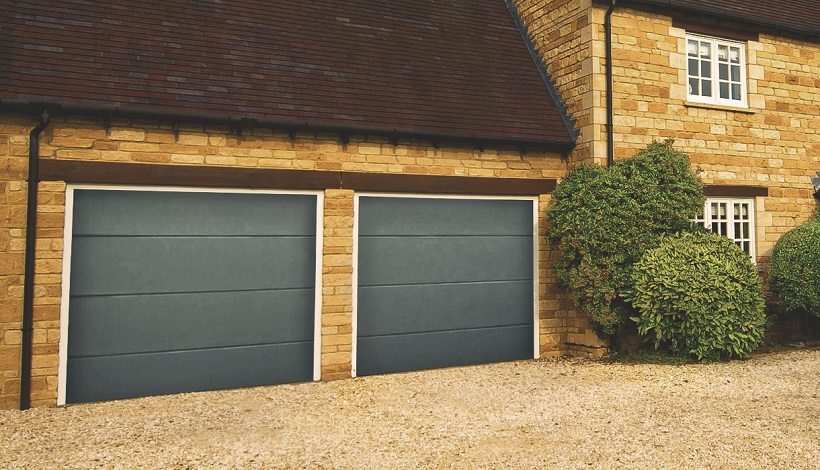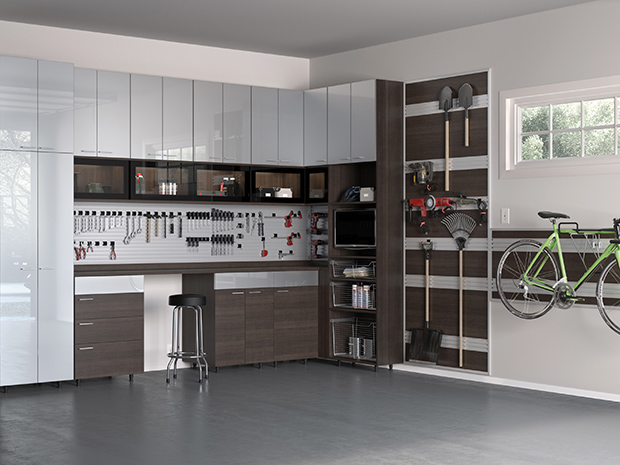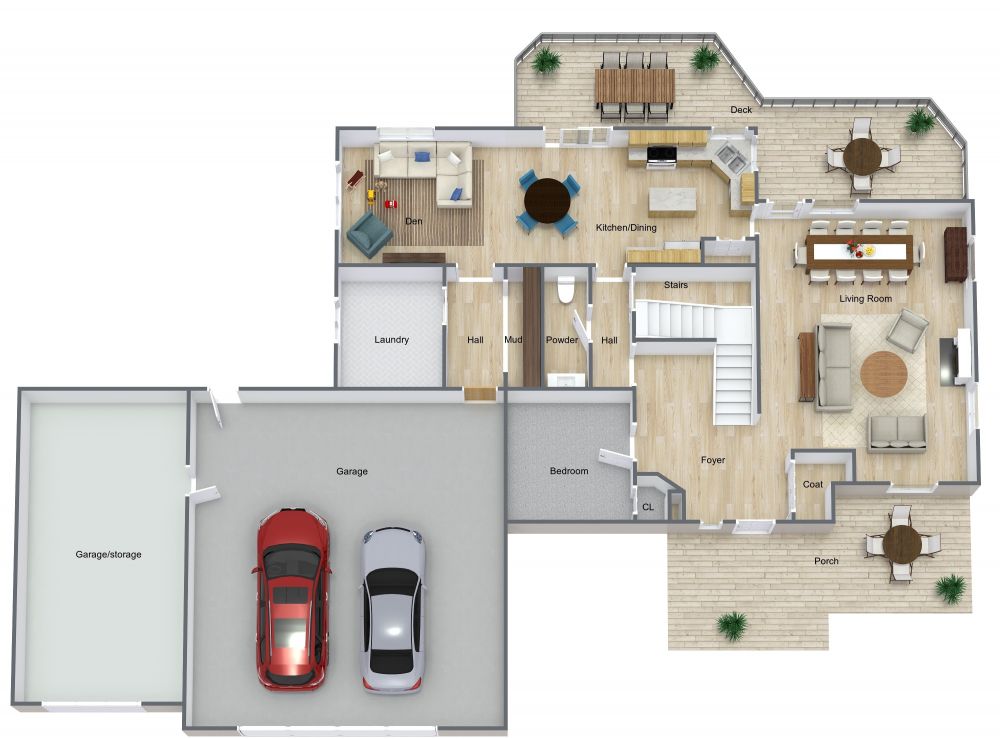
It can be very difficult to live in a garage. It's not a secure place to live and there are many risks associated with living in it. Pests pose a major risk. There are many reasons why pests like garages. They are secluded, shady and dark which attracts insects and rodents. It is also easy to access garages. This makes it easy for them to enter and exit the building quickly.
Some of these creatures can pose danger to pets and owners. Muskrats, for example can be aggressive and cause water seepage issues. If you cannot get rid them, they can inflict damage on your plants as well as spread rabies and other disease. It is important to keep hazardous chemicals out the garage.
Another risk with a garage is that it is not insulated. A garage that is not insulated can cause problems when the temperature drops. To prevent this, keep your floors warm. Installing garage heaters is a great solution. Alternately, you could create a second-floor apartment.
Many people choose to live in garages for various reasons. Typically, it's because of convenience. Garages are easy to access, making it possible for people to move around the building. It is also a great storage space.

While the garage provides a nice refuge from the elements, there are other hazards to consider. If you plan to convert the garage into an apartment, you will need to obtain a building permit. There are also zoning laws that can make the conversion difficult.
Many communities have restrictions about the types of living spaces you can build. You should consult your alderman if you plan to convert a garage to a living space.
Before you make any major changes to the property, consult with your agent. It's important that you keep your taxes up to date and pay the right insurance premiums. Major changes may affect your risk profile and increase the cost of your house insurance. Adding an extra bedroom can also lower the resale value of your house.
Even though the garage is a great shelter from the weather, it can still be a breeding ground for various types of pests. Depending on your area, you could have a variety of different bugs, including spiders, raccoons, ants, and rats.
You should ensure that your area is free from pests if you decide to make your garage a living space. If you suspect that there is a problem with a neighbor's garage, you should file a complaint with the local housing authority. Please note that your name may be included on the complaint.

It has been reported that people sleep in cars while using kerosene heaters to heat their homes. These appliances can be dangerous so you need to be cautious. Also, your vehicle may be at risk of being broken into.
The most important factor to take into consideration is safety. Children should not be exposed to harmful chemicals. Also, make sure they are away from any boxes, wires, or other items.
FAQ
Is $30000 too much for a kitchen redesign?
A kitchen renovation can cost anywhere between $15000 - $35000 depending on how much you want to spend. A complete kitchen remodel will cost you more than $20,000. If you are looking to upgrade appliances, paint or replace countertops, it is possible to do this for less than $3000.
A full-scale renovation typically costs between $12,000 and $25,000 on average. There are ways to save money but not sacrifice quality. For example, you can install a new sink instead of replacing an old one, which costs approximately $1000. You can also purchase used appliances at half of the cost of new.
Kitchen renovations will take longer than any other type of project, so plan ahead. You don't want to start working in your kitchen only to realize halfway through that you're going to run out of time before completing the job.
The best thing is to get going early. Start by looking at different options and getting quotes from contractors. You can then narrow your choices by price, availability, and quality.
After you have found potential contractors, get estimates and compare prices. The best bid may not be the most affordable. It's important that you find someone with similar work experiences who can provide a detailed estimate.
Remember to include all the extras when calculating the final cost. These might include extra labor costs, permit fees, etc. Be realistic about the amount you can afford, and stick to your budget.
Be honest if you are unhappy with any bid. If you don't like the first quote, tell the contractor why and give him or her another chance. Don't let pride stand in the way of saving money.
Are there any savings on a remodel of a bathroom or kitchen.
Remodeling a kitchen or bathroom is a costly undertaking. But considering how much money you spend on energy bills each month, it might make more sense to invest in upgrading your home.
It is possible to save thousands every year with a simple upgrade. Simple improvements such as insulation of walls and ceilings can lower heating and cooling costs up to 30 percent. Even a modest addition can improve comfort and increase resale value.
The most important thing to keep in mind when planning for renovations is to choose products that are durable and easy to maintain. Material like porcelain tile, stainless-steel appliances, and solid wood flooring are more durable and can be repaired less often than vinyl or laminate countertops.
You may also find that replacing old fixtures with newer models can help cut utility expenses. Installing low-flow faucets or showerheads can cut water use by up to 50%. Up to 75 percent of electricity can be saved by replacing inefficient lighting fixtures with compact fluorescent bulbs.
How should you renovate a home?
First, the roof. Second, the plumbing. Third, the electrical wiring. Fourth, the walls. Fifth, the floors. Sixth, are the windows. Seventh, doors. Eighth, the kitchen. Ninth, the bathroom. Tenth is the garage.
Finally, after all this work is done, you'll have everything you need to get into the attic.
If you don't know how to renovate your own house, you might hire somebody who does. You will need patience, time, and effort when renovating your own home. It is also expensive. It will take time and money.
Renovations aren't cheap, but they can save you tons of money in the long run. Plus, having a beautiful home makes life better.
What is the difference between building a new home and gutting a current one?
A home's contents are removed, such as walls, floors, ceilings and plumbing. It is often done when you are moving to a new location and wish to make some improvements before you move in. The cost of gutting a home can be quite expensive due to the complexity involved. Depending on what job you do, the average cost for gutting a house is $10,000 to $20,000
The process of building a home involves the construction of a house from one frame to another. Next, the builder adds walls, flooring and roofing. This is often done after purchasing lots of land. It is usually cheaper than gutting a house and will cost around $15,000 to $30,000.
It really depends on your plans for the space. You'll need to spend more if you plan to gut your home. It doesn't matter if you want a home built. You can design it yourself, rather than waiting for someone else.
What is the difference in a remodel and a renovaton?
Remodeling is any major transformation of a room or portion of a bedroom. A renovation is minor changes to a room, or a portion of a bedroom. For example, a bathroom remodeling project is considered a major one, while an upgrade to a sink faucet would be considered a minor job.
Remodeling involves replacing a complete room or a part of a entire room. A renovation involves only changing a portion of a room. Remodeling a kitchen could mean replacing countertops, sinks or appliances. It also involves changing the lighting, colors and accessories. You could also update your kitchen by painting the walls, or installing new light fixtures.
What are the included features in a full remodel of your kitchen?
A full kitchen remodels more than just a new sink and faucet. You can also get cabinets, countertops or appliances, as well as flooring and plumbing fixtures.
Homeowners can remodel their kitchens completely without needing to do major work. This means there is no need to tear down the kitchen, making the project more manageable for both the homeowner as well as the contractor.
A kitchen renovation can include a variety of services such as plumbing, HVAC, painting, drywall installation, and electrical. Complete kitchen remodeling may require multiple contractors, depending on how extensive the renovation is.
Hiring professionals who are familiar with kitchen remodeling is the best way for it to go smoothly. Kitchen remodels are complex and can be delayed by small issues. If you choose a DIY approach, make sure you plan and have a backup plan in place in case things go wrong.
Statistics
- Following the effects of COVID-19, homeowners spent 48% less on their renovation costs than before the pandemic 1 2 (rocketmortgage.com)
- About 33 percent of people report renovating their primary bedroom to increase livability and overall function. (rocketmortgage.com)
- $320,976Additional home value: $152,996Return on investment: 48%Mid-range average cost: $156,741Additional home value: $85,672Return on investment: (rocketmortgage.com)
- 5%Roof2 – 4%Standard Bedroom1 – 3% (rocketmortgage.com)
- According to a survey of renovations in the top 50 U.S. metro cities by Houzz, people spend $15,000 on average per renovation project. (rocketmortgage.com)
External Links
How To
How to Remove Tile Grout From Floor Tiles
Most people don’t know what tile grouting is. It is used to seal joints between tiles. Many different types of grout are available today, each using a specific purpose. This article will teach you how to remove tile grout off floor tiles.
-
Before you can begin the process, ensure that you have all necessary tools. It is best to have a grout cutter, grout scraper, and some towels.
-
Now you must clean any dirt or debris under the tile. The grout cutter can be used to cut the grout and remove any loose tiles. Take care not to damage the tiles.
-
After you've cleaned up everything, grab the grout scraper to remove any grout. Step 4 can be completed if you have no grout.
-
Once you've done all of the cleaning, you can move onto the next step. Make sure to take one of the rags out and soak it in water. Make sure that the rag is completely wet. You can wring the rag out if it has become wet. This will ensure that any water remains in the rag.
-
Place the wet cloth on the joint where the tile meets with the wall. The grout will begin to crumble if you press down hard on the rag. Slowly pull down on the rag until it is pulled towards you. Continue pulling it backwards and forwards until all the grout has been removed.
-
Repeat steps 4 to 5 until grout is gone. Rinse the ragout, and repeat the process if needed.
-
When you are done removing grout, clean the tiles using a damp cloth. Let dry completely.